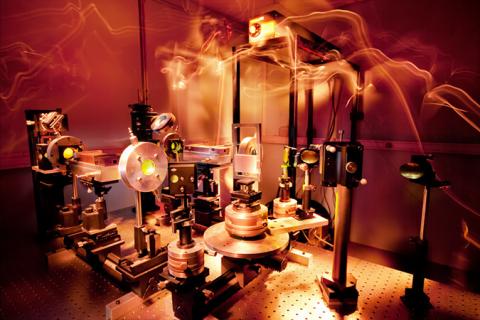Radiative transfer and couplings in semi-transparent media
Context
The evaluation of radiative transfer in the global heat transfer is an important problem intervening in particular in the design and optimization of systems and processes. Our research activities are centered on the study of heat transfer by thermal radiation and / or coupling with heat conduction, in solid or fluid media. This work allows the determination of the radiative properties of the studied environments described as "complex" due to their heterogeneous structure or composition. The studies deal with theoretical and experimental developments, from the fundamental level (physics of the matter-radiation interaction) up to the application (macrosopic approach and coupling).
objectives
- Characterize and model the macroscopic radiative properties of various complex media such as heterogeneous porous or composite materials (fibrous, ceramics, ...), gaseous media possibly reactive (flame), solid-liquid phase change materials;
- Better understand the phenomena of transport and energy exchange in / with matter by radiation and / or conduction;
- Improve the thermal performance of materials or systems and contribute to the development of new products;
- To propose original methods for the determination of temperature field by identification, and the direct measurement of the high surface temperatures.
Scientific skills
The originality of the approaches implemented lies in:
- multi-scale modeling of phenomena,
- the strong interaction modeling / experimentation,
- the diversity of the environments studied.
The phenomena related to radiative and / or conductive transfer are modeled. Macroscopic quantities such as heat flux, temperature field, emission factor, transmittances and reflectances, as well as intrinsic thermophysical and radiative properties, are calculated from physical models linking the substructure scale. The experimental means are associated with numerical techniques of analysis aiming at linking the modeling works with the measurements and thus to identify some of the properties of the studied mediums. Various banks based on radiometric spectrometric measurements are developed.
Some international collaborations
Brigham Young University (Provo, Utah, USA). Pontificia Universidade Catolica do Parana (PUCPR, Brazil), Universidade Federal Uberlândia (Brazil), Kunming University of Science and Technology (China).
Some national collaborations
GDR CNRS ACCORT, Fresnel Institute (Marseille), Institut P '(Poitier), RAPSODEE Center (Albi), LAPLACE (Toulouse), PROMES (Odeillo).
Some recent industrial partnerships
CEA, SAINT-GOBAIN, EADS / ASTRIUM, CERFACS, ONERA, SNECMA, ...


